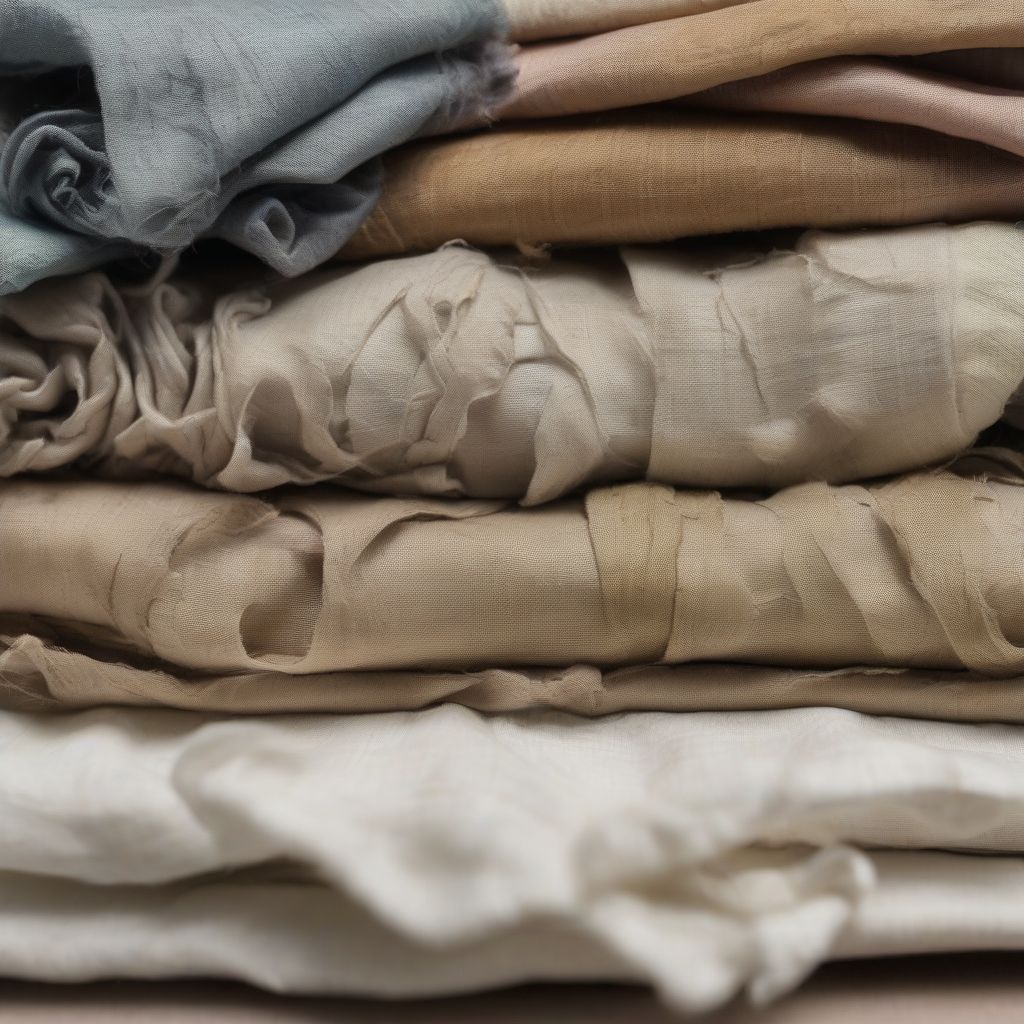Have you ever walked into a craft store, felt a wave of inspiration wash over you, then immediately felt overwhelmed by the sheer variety of fabrics staring back at you from the shelves? Don’t worry, we’ve all been there! Choosing the right fabric for your project is like picking the perfect ingredients for a recipe – it can make all the difference.
Whether you’re a seasoned DIY enthusiast or just starting to explore the wonderful world of crafting, understanding the different types of fabrics and their unique properties can be a game-changer. This guide will walk you through the essential knowledge you need to confidently choose the best fabric for your next crafting adventure. Let’s dive in!
Natural Fabrics: Embracing the Beauty of Nature
Natural fabrics, derived from plants and animals, have been used for centuries and continue to be popular choices for crafting. They offer a unique blend of beauty, durability, and sustainability.
1. Cotton: The Versatile All-Rounder
Cotton, a soft and breathable fiber harvested from the cotton plant, is a crafting staple. It’s known for its versatility, making it suitable for various projects from quilting and apparel to home decor.
Key Features:
- Softness: Cotton is gentle on the skin, making it ideal for projects that come into contact with the body, like clothing or baby blankets.
- Breathability: Its breathable nature allows air to circulate, making it comfortable for warm-weather wear and home furnishings.
- Durability: Cotton is relatively strong and can withstand frequent washing and wear, making it a practical choice for everyday items.
- Versatility: It readily accepts dyes and prints, offering endless creative possibilities.
Crafting Considerations:
- Cotton is prone to wrinkling, so projects requiring a crisp finish might need frequent ironing.
- It can shrink slightly after washing, so pre-washing the fabric before starting your project is recommended.
2. Linen: A Touch of Rustic Elegance
Linen, woven from the flax plant’s fibers, exudes a natural elegance and timeless appeal. It’s often favored for its luxurious feel and durability, making it a popular choice for tablecloths, napkins, and lightweight summer garments.
Key Features:
- Strength and Durability: Linen is known for its exceptional strength, making it resistant to wear and tear.
- Absorbency: It absorbs moisture quickly and dries faster than cotton, making it perfect for warm weather.
- Unique Texture: Linen possesses a distinctive texture that adds visual interest to any project.
Crafting Considerations:
- Linen wrinkles easily, so projects requiring a polished look might need frequent ironing.
- It can be more expensive than cotton, making it a better choice for special projects.
3. Silk: The Epitome of Luxury
Silk, a luxurious fiber produced by silkworms, has been prized for centuries for its softness, sheen, and drape. It’s often used in high-end garments, scarves, and accessories.
Key Features:
- Luxurious Feel: Silk is renowned for its exceptional softness and smooth texture.
- Elegant Drape: It drapes beautifully, making it ideal for flowing garments and accessories.
- Temperature Regulating: Silk can keep you cool in summer and warm in winter.
Crafting Considerations:
- Silk is a delicate fabric that requires gentle handling and special care.
- It’s prone to water spotting and fading, so dry cleaning is often recommended.
- Silk can be expensive, making it a better choice for special projects or accents.
 Natural Fabrics for Crafts
Natural Fabrics for Crafts
Synthetic Fabrics: Exploring Man-Made Wonders
Synthetic fabrics are created through chemical processes, offering unique properties that make them suitable for various crafting needs. They are often praised for their durability, affordability, and resistance to wrinkles and fading.
1. Polyester: The Durable and Versatile Choice
Polyester, a synthetic fiber known for its durability and wrinkle resistance, is a popular choice for crafting. It’s often used in apparel, upholstery, and home décor projects.
Key Features:
- Durability: Polyester is highly resistant to wear and tear, making it a practical choice for high-traffic areas or items that see frequent use.
- Wrinkle Resistance: It holds its shape well and resists wrinkling, making it ideal for projects that require a polished look.
- Colorfastness: Polyester dyes well and resists fading, making it suitable for projects exposed to sunlight.
Crafting Considerations:
- Polyester can trap heat, making it less breathable than natural fibers.
- It can be prone to static cling.
2. Felt: The Crafter’s Best Friend
Felt, a non-woven fabric made from fibers matted together, is a crafting favorite, especially for beginners. Its versatility and ease of use make it perfect for various projects from toys and accessories to home décor.
Key Features:
- Easy to Work With: Felt doesn’t fray, eliminating the need for hemming or finishing edges.
- Versatile: It comes in a wide array of colors and thicknesses, offering endless creative possibilities.
- Affordable: Felt is generally inexpensive, making it a budget-friendly option for crafting.
Crafting Considerations:
- Felt can be prone to pilling with repeated use.
- It’s not as durable as woven fabrics, so it’s better suited for decorative or lightweight projects.
3. Fleece: The Cozy and Comfortable Option
Fleece, a soft and fuzzy synthetic fabric, is known for its warmth and comfort. It’s often used in blankets, outerwear, and accessories for its insulating properties.
Key Features:
- Warmth: Fleece provides excellent insulation, making it ideal for cold-weather projects.
- Softness: Its plush texture is soft against the skin, adding a cozy touch to any project.
- Lightweight: Fleece is lightweight yet warm, making it comfortable to wear or carry.
Crafting Considerations:
- Fleece can be prone to pilling with repeated use or washing.
- It can trap heat, making it less breathable than natural fibers.
Blends: The Best of Both Worlds
Fabric blends combine the desirable properties of both natural and synthetic fibers, offering a wider range of options to suit your crafting needs. For example, a cotton-polyester blend combines the softness and breathability of cotton with the wrinkle resistance and durability of polyester.
Choosing the Right Fabric: Factors to Consider
Selecting the perfect fabric for your crafting project depends on several factors, including:
- Project Type: The type of project you’re working on will heavily influence your fabric choice. A delicate silk scarf will require a different fabric than a sturdy canvas tote bag.
- Durability: Consider how much wear and tear the finished project will endure.
- Texture and Drape: The texture and drape of the fabric will affect the look and feel of your project.
- Care Instructions: Check the fabric care instructions to ensure it aligns with your preferences and lifestyle.
- Cost: Fabric prices vary widely, so set a budget for your project and choose materials accordingly.
Conclusion: Embark on Your Fabric Adventure
Understanding the different types of fabrics available for crafting empowers you to make informed decisions and create beautiful, long-lasting projects. By considering the factors mentioned above, you can confidently choose the best fabric for your needs and let your creativity soar. Remember, experimenting with different fabrics is part of the fun. Don’t be afraid to step outside your comfort zone and try something new!
[amazon bestseller=”fabric for crafts”]
